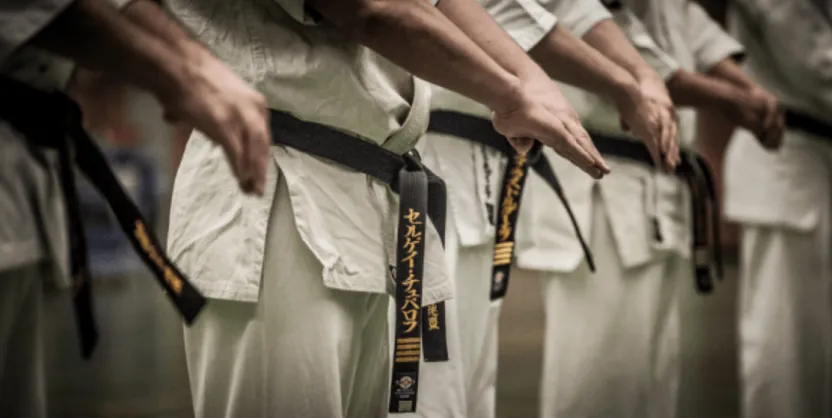I often hear people who do karate or have done karate in the past say they don’t like kata. Sometimes if they have done it in the past and quit they will say something along the lines of karate is too formal or rigid and when you dig a bit deeper inevitably kata is cited as an example. For those doing karate the statements tend to take the form of not liking kata as they prefer fighting. In all of these cases I tend to think that the person has missed the point of kata either due to their instructor not teaching them anything other than a set of movements to learn by rote or by them misunderstanding what they have been shown or disassociating the application with the kata seeing bunkai and kata as two completely separate entities.
Shihan Cummins often says that kihon is the heart of karate and kata is the soul of karate and I think this is a very apt description. The Shotokan kata contain the core of the system encompassing strikes, kicks, defence against and the use of weapons and grappling techniques such as locks and throws. These are usually taught when students study the kata bunkai or oyo. Indeed I would argue that there is far more “fighting” within kata than competition karate as it contains techniques that whilst usable for self defence would be considered too dangerous for use in competition such as breaks and techniques to maim the attacker. So why does the myth that kata is just a dance persist? Part of it may be related to the age at which a lot of people start karate and the grade they attain. There are often many ways in which a particular movement in a kata can be interpreted and often when teaching beginners and lower grades a simpler application is used more consistent with their level of experience so a wrist lock may become a two handed block for example. Then of course a lot of people start karate as young children, obviously a responsible instructor is going to be very careful what they teach young children and so they will mostly learn the kata as a set of moves with some very simply bunkai if any.
Over the years I have been training I have also met many people who have done karate and then gone onto a grappling art who have then commented that they can now see far more locks and throws in kata than they could before. This may be due to the subtle nature in which some of these are exposed in kata and so those who know what to look for can identify them more easily. Some of this may also be related to the typical background of karate students outside of Japan where at a young age children are taught Judo as part of their standard physical education lessons. Very few people who start karate in the UK already have this background and so are not familiar with throws. All of these factors no doubt help contribute to the kata is a dance myth and so when students are taught no bunkai or bunkai which seems completely impractical it is no wonder that some assume that kata has no purpose other than passing gradings and competition.
Those who attend Shihan Cummins Saturday kata class will be familiar with the use of wrist and arm locks in Bunkai and he always emphasises the importance of kata and understanding the meaning of the movements. Black belts especially should aim to fully understand the bunkai for the kata they know and how an application can work for them. Indeed for later black belt exams you will be required to explain and demonstrate bunkai for a kata.
I have been lucky over the years having regularly trained with both Shihan Cyril Cummins and Sensei Aidan Trimble both of whom emphasise the importance of kata and understanding the bunkai/oyo which has helped me to see beyond the basic movements and appreciate the rich tapestry that is kata. I would urge anyone who doubts the importance of kata beyond gradings and competition to reconsider and take another look.
Richard Amuzu, 3rd Dan
First published 15th February 2015 on the BHSKC Web Site

